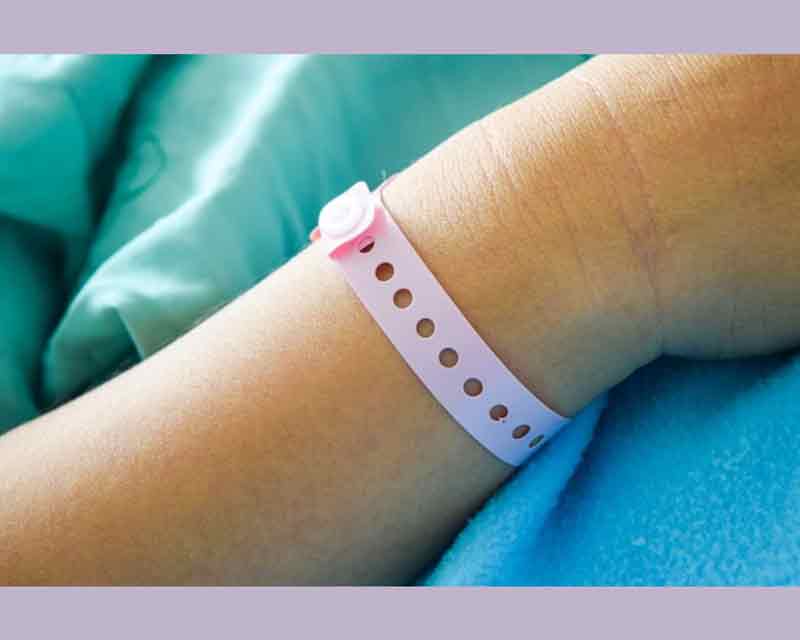Exploring the Different Kinds Of Patient Identification Band Made Use Of in Clinical Facilities
In the elaborate globe of healthcare, the crucial duty of Patient Identification bands usually goes unnoticed. These bands, varying from easy paper wristbands to sophisticated RFID bands, form the foundation of Patient safety protocols, making sure accuracy in Patient Identification.
Understanding the Importance of Patient Identification Bands
While they may seem like mere devices, Patient Identification bands play a vital role in medical facilities. These bands serve as a critical tool for validating Patient identity, stopping clinical mistakes connected to misidentification. Patient Identification bands also aid in improving administrative tasks, making sure accurate record-keeping and billing.
Traditional Paper Wristbands: Their Usage and Limitations
Standard paper wristbands have actually been a staple in Patient Identification throughout numerous clinical centers. While their usage prevails, they harbor particular limitations that may impact their efficiency in Patient management. This section will certainly focus on the scope of their application and the intrinsic disadvantages connected with their use.
Paper Wristbands: Usage Range
In the realm of Patient Identification, paper wristbands have actually long held a critical role. These bands are usually utilized in outpatient setups, where the Patient's keep is short-lived. Despite advancements in technology, the simple paper wristband stays a affordable and reputable option for Patient Identification in various healthcare scenarios.
Limitations of Paper Wristbands
Despite their widespread use, paper wristbands are not without their downsides. In addition, paper wristbands usually lack the technical capacities of even more contemporary alternatives, such as barcoding or RFID chips, restricting their functionality to just displaying created information. Paper wristbands can trigger discomfort or skin inflammation to some people, particularly when put on for extended durations.
Barcoded Wristbands: Developments in Patient Identification
While Patient Identification has actually long been a critical aspect of healthcare, the advent of barcoded wristbands indicates a substantial leap ahead. These bands take advantage of the simplicity of barcoding innovation, permitting for Patient info to be promptly scanned and accessed. They improve the speed and accuracy of Patient Identification, minimizing the risk of medical mistakes associated to misidentification.
Superhigh Frequency Identification (RFID) Bands: a Step Towards Futuristic Healthcare
The advancement of Patient Identification bands has produced the emergence of Superhigh frequency Identification (RFID) Bands (patient identification band). These innovative tools existing key benefits for health care centers, offering a more efficient and technically progressed ways of Patient Identification. The implementation of RFID in medical care is a significant step towards an extra advanced method to Patient monitoring and safety and security
Comprehending RFID Bands

RFID Bands: Key Advantages
Primarily, these bands improve Patient safety and security by supplying precise, instantaneous Identification, thus lowering medical errors. RFID bands can keep a huge quantity of Patient information, including medical background and allergies, making it possible for individualized treatment. In general, RFID bands stand for a significant advancement in Patient Identification technology, profiting both patients and healthcare companies.
Carrying Out RFID in Healthcare
As we enter a technically advanced period, the implementation of RFID bands in healthcare comes to be increasingly vital. These bands provide a smooth method to track and recognize patients, ensuring their safety and security and boosting performance in therapy procedures. RFID bands supply various advantages over standard Identification techniques. They can save a vast amount of information, consisting of the Patient's case history and therapy strategies, which can be easily accessed by medical care companies. This data assists physicians make educated choices regarding the Patient's therapy strategy. RFID bands lower clinical mistakes by providing exact Patient Identification, which is vital in stopping misdiagnosis or incorrect medication management. Hence, the application of RFID bands is a significant action in the direction of improving Patient security and healthcare distribution.

Color-Coded Wristbands: Assisting in Quick and Accurate Diagnosis
In the dynamic atmosphere of a medical facility, color-coded wristbands have actually emerged as crucial devices for swift and exact Identification of a person's clinical problem. These wristbands, put on by patients, bring particular colors that represent different medical problems or standings. Red might suggest allergy threats, while yellow might represent an autumn danger. This system is designed to use instant visual hints to doctor, enhancing Patient safety and security and read here care top quality. In emergency situations, the usage of these wristbands allows for rapid decision-making. The efficiency of color-coded wristbands depends on the harmony of shade analysis throughout healthcare organizations, requiring common requirements for regular application.
Strategies for Efficient Implementation and Administration of Patient ID Bands
Attaining ideal use of Patient Identification bands demands a well-structured technique for their application and monitoring. Patient education is likewise essential; clients have to recognize the objective of the bands and the requirement for their consistent wear. It's crucial to have a back-up strategy in place, such as barcode scanning or biometrics, to make sure that Patient Identification is never jeopardized.
Verdict
Patient Identification bands are important in clinical centers to make certain safety and security and precision. Effective execution and management of these bands can dramatically reduce medical errors, enhance performance, and enhance total Patient treatment.
These bands, varying from easy paper wristbands to advanced RFID bands, create the backbone of Patient safety and security protocols, guaranteeing accuracy in Patient Identification.The advancement of Patient Identification Homepage bands has actually brought concerning the development of Radio Frequency Identification (RFID) Bands. On the whole, RFID bands stand for a significant innovation in Patient Identification modern technology, profiting both people and health care carriers.
RFID bands lower medical mistakes by providing accurate Patient Identification, which is essential in avoiding misdiagnosis or incorrect medication administration. Patient education and learning is also essential; people need to recognize the purpose of the bands and the need for their continuous wear.